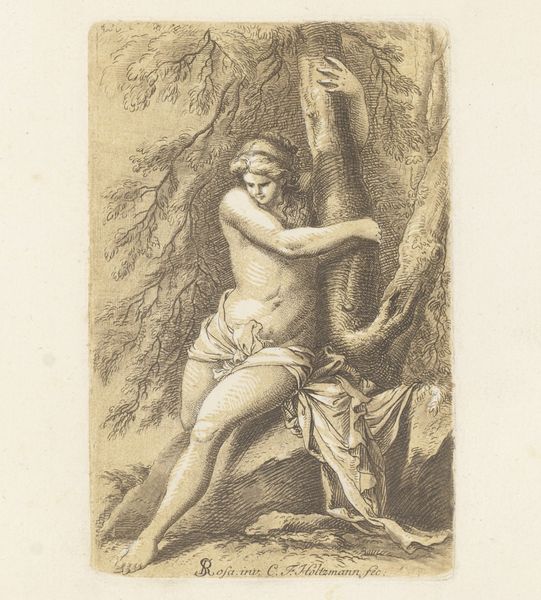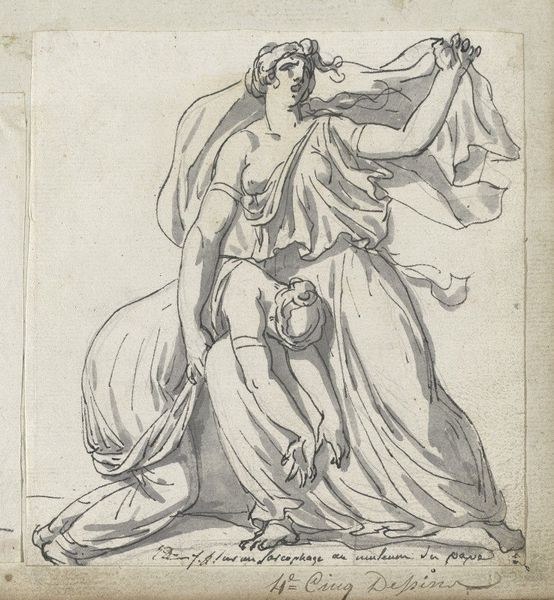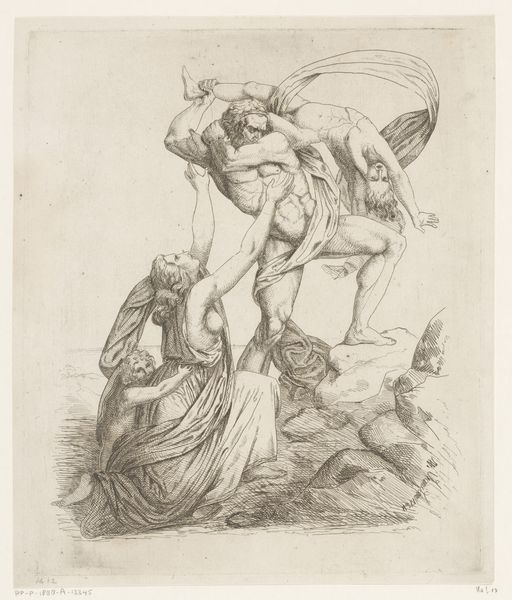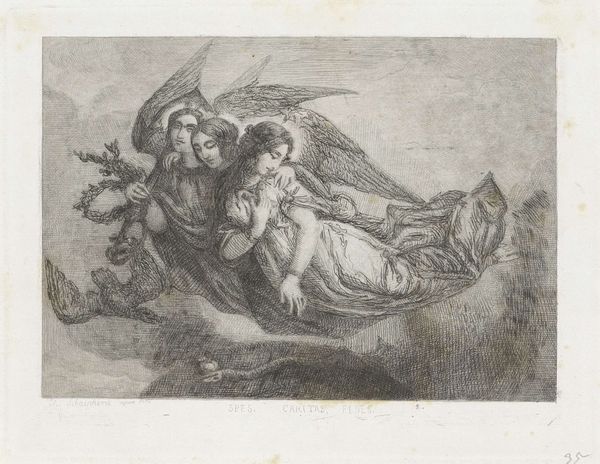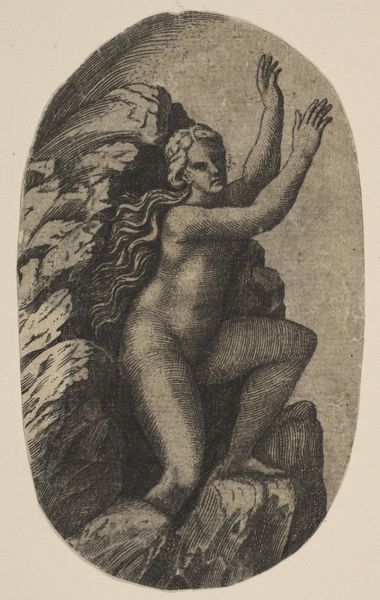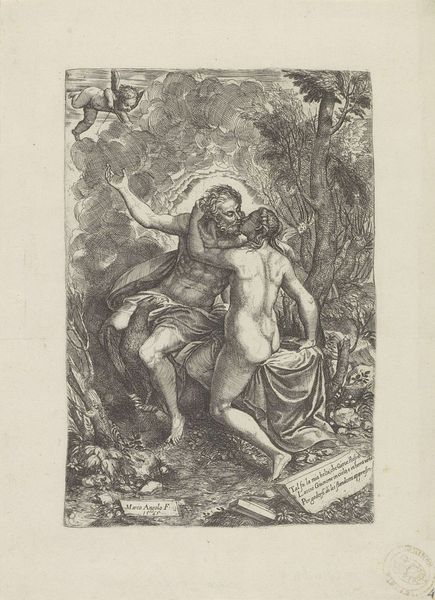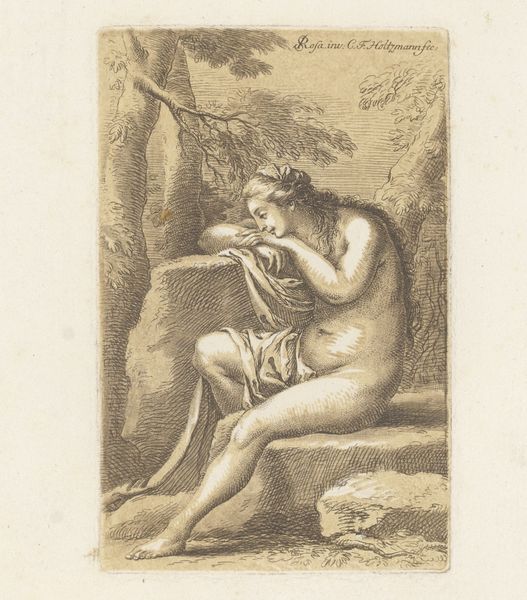
#
pencil drawn
#
amateur sketch
#
light pencil work
#
pencil sketch
#
personal sketchbook
#
pencil drawing
#
pen-ink sketch
#
sketchbook drawing
#
pencil work
#
sketchbook art
Dimensions: height 125 mm, width 85 mm
Copyright: Rijks Museum: Open Domain
This is an etching of an angel with a laurel wreath, made by Theodoor Schaepkens in the Netherlands in the 19th century. At this time, Dutch art was deeply entwined with its cultural identity, often drawing upon its Golden Age heritage. Here, Schaepkens employs a classical figure within a print medium, reflecting a nostalgia for idealized forms. The laurel wreath itself is a classical symbol of victory and honor, yet its presentation by an angel suggests a religious or spiritual context. Schaepkens worked at a time of institutional development for the arts; museums and art academies were becoming increasingly important in shaping artistic tastes and legitimizing certain styles. In this context, his work would have contributed to a visual vocabulary that was both academic and resonant with historical themes. Understanding this image benefits from insights into 19th-century Dutch art institutions and the political symbolism of classical motifs. Ultimately, art history demonstrates that images are never neutral; they are products of specific social and institutional forces.
Comments
No comments
Be the first to comment and join the conversation on the ultimate creative platform.
